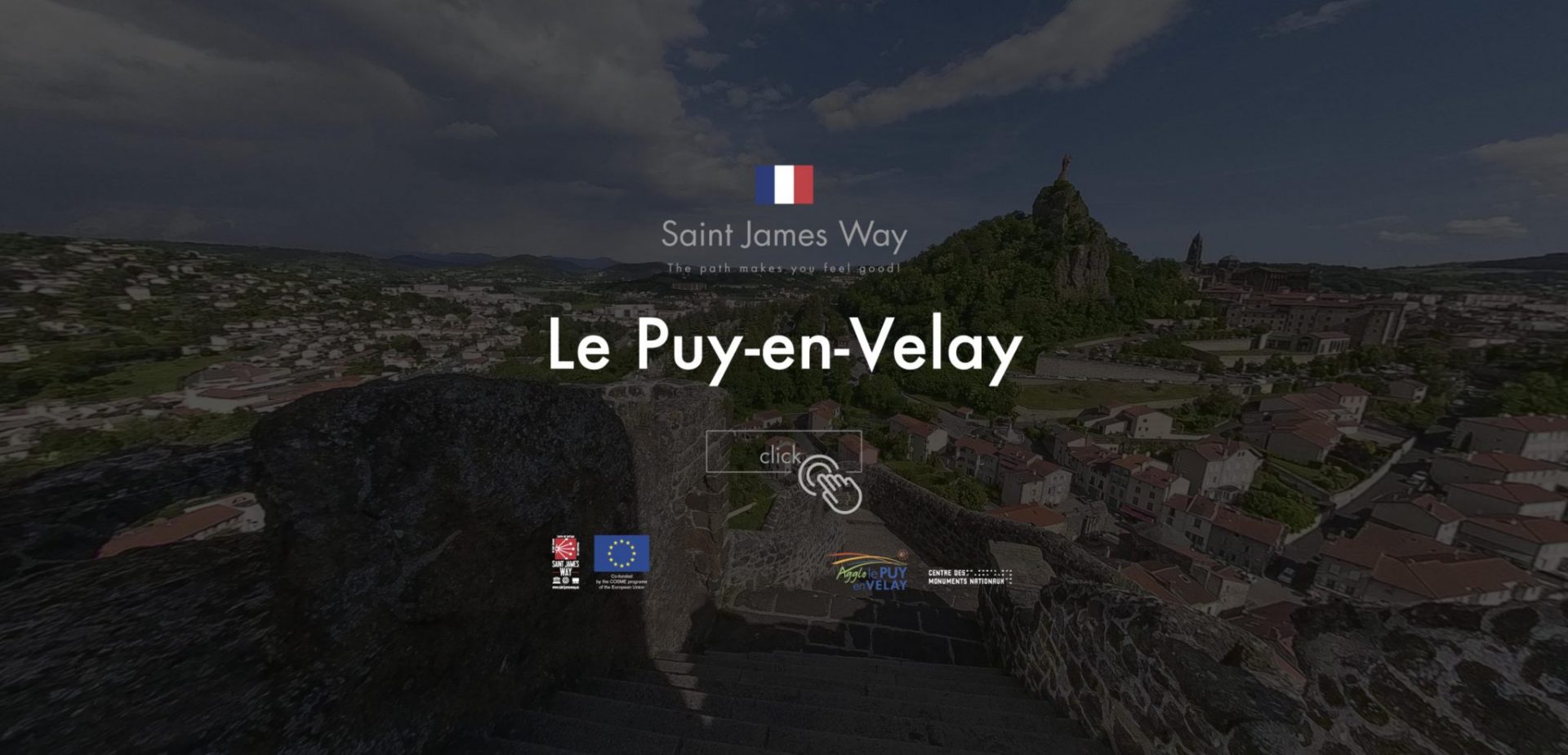
FRANCE
The Communauté d’agglomération du Puy en Velay is one of the founding members of the European Federation of Saint James Way.
The Auvergne Rhône Alpes region, to which the Commonwealth belongs, has also been part of the Federation since 2017.

The Roads through France
The Via Podiensis is the main Camino to Santiago through France and the most important European medieval pilgrimage route. It starts in Le Puy-en-Velay (Auvergne), and thousands of pilgrims visit every year. Marked as GR-65, it has a high value cultural and natural heritage.
The Via Tolosana, well known for crossing Toulouse, the capital of Occitania, is one of the four great Jacobean itineraries in France, which was already mentioned in the Codex Calixtino (12th century), with its outstanding stages in Arles, Saint-Gilles, Montpellier and Toulouse. Today it is the second most popular in the country. Marked as GR 653, it offers a great variety of landscapes and monuments.
The Via Turonensis is the Camino de Santiago that starts from Paris or Tours, and comes from the Netherlands. It is one of the four main Jacobean routes of the Middle Ages, connecting in Ostabat, already close to Saint Jean Pied de Port, with two others.
The Via Lemovicensis starts from the Sainte Marie Madeleine basilica in Vézelay and meets two other French pilgrimage routes in Ostabat. The Vézelay Way is one of the four most important medieval Jacobean pilgrimage routes.
The Piedmont Trail is the Jacobean path that crosses the French Pre-Pyrenees, passing through Narbonne, Carcassonne, Lourdes and Oloron to Saint-Jean-Pied-de-Port, and which shares the route with the GR-78. An itinerary steeped in history, already used before the 11th century.
NEWS
THE WAYS IN FRANCE
VIA PODIENSIS LE PUY EN VELAY
The Saint James Way to Compostela, that crosses France is approximately 1,116 km long. It departs from Geneva, in Switzerland, and crosses all of France, passing through the most important French cities along the way, such as Le-Puy-en-Velay, Conques, known thanks to the Codex Calixtinus, Figeac, Cahors, Moissac, Eauze and finally St Jean -Pied-de-Port, a small town on the border with Spain.
Le Puy en Velay, a UNESCO World Heritage Site, is set amid volcanic peaks, and is one of the wonders of Haute Loire. It has been an important Marian pilgrimage center since the Middle Ages. Here begins the Via Podiensis, one of the four French starting points on the Camino de Santiago. In Le Puy en Velay you can visit the splendid Saint-Michel chapel, perched on a volcanic peak 82 meters high, and its majestic cathedral, also declared a World Heritage Site by UNESCO. Romanesque in style, it is the symbol of the city and has had Arabic influences and also from eastern Spain, during the two centuries that it lasted, influences that are clearly visible today with the different styles that coexist in architecture: Romanesque, Byzantine, Carolingian and Moorish.
In Conques, a small town in the Midi-Pyrénées region already mentioned in the Codex Calixtinus, you will find the Church of Sainte-Foy, one of the first masterpieces of Romanesque architecture. Today, only the artistic remains of the church and the abbey that succeeded it remain, founded by Charlemagne.
Figeac is located in the Célé, and was built between the 12th and 14th centuries by wealthy merchants. Here you can evoke Champollion’s work to decipher Egyptian hieroglyphs, thanks to the huge reproduction of the Rosetta Stone located at your feet, in Place des Écritures, where you can also visit his family home.
Cahors is a monumental city famous for its vineyards and its gastronomy. One of the “Cities of Art and History”, with 25 secret gardens that have earned it the label “Remarkable Gardens.” Visit the Saint Etienne Cathedral, the main place of Catholic worship and episcopal see, and the famous Valentré Bridge 14th century.
Built around the Benedictine abbey dedicated to Saint Peter, Moissac is a quarter of the way between Le Puy en Velay and Saint-Jacques-de-Compostelle. If the abbey and the cloister offer a remarkable example of a mixture of Romanesque and Gothic styles, it is the tympanum of the south portal that constitutes Moissac’s true masterpiece.
Eauze, is a small town of Gallo-Roman origin in the Elusates area, in the southwestern part of La Gaulle, founded in the early 1st century AD. C. Admire the Eauze Treasure in the archaeological museum, a collection of some 28,054 items, coins, jewelery and precious items, all dating from the period of the Roman Empire.
Saint Jean Pied de Port is a very small French city, located in The department of Pyrenees-Atlantiques, in the Aquitaine region, on the border with Spain. Known as the starting point of the French way in Spain, towards Saint-Jacques-de-Compostelle. Every year, the city is visited by thousands of pilgrims.
